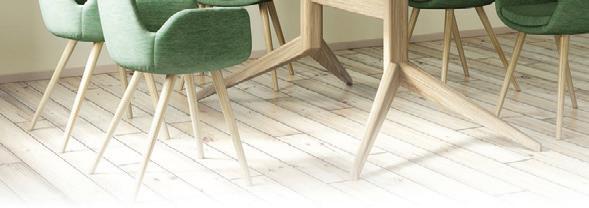
2 minute read
performance building
CI live HVAC and IAQ takeaways
BY: CAROL EISENLOHR, BUILDING TOWARDS BETTER LLC AND HBA BUILDING SCIENCE CONSULTANT
Advertisement
Some of the takeaways from my recent class, “Mechanical Systems for High-Performance Homes” are below: Air leakage through HVAC ducting systems.
HVAC ducting has typical leakage rates related to the style. Hard Ducting has the highest leakage, before sealing, and has many more opportunities/seams to leak, therefore very time consuming to seal in the field. Average leakage on hard ducting before sealing is around 30% which could add a half ton to your system requirements.
Flex ducting which is the most used ducting in our market has about a 20% leakage rate before sealing and has less opportunities/connections to leak, therefore is faster to seal along with being faster to install in the field.
Rheia ducting system, a relatively new system on the market, has less than 10% leakage rate after install and most of the leakage occurs around the manifold connections which is easy to discover and seal.
Design and sizing are key to achieving sustainable systems that deliver comfort to your homeowner. Do Not Oversize! It is more important now than it ever has been for builders to hire an HVAC company that is doing the work and verifying energy efficiencies into their calculations for sizing equipment.


Commissioning: TEST FOR SUCCESS: If you measure it, it will improve:
• Benchmark current construction
• Pressures in duct work

• Duct leakage
• Temperature rise & delivery
• Run times
• Total system airflow
• Airflow at registers & outlets
• Refrigerant charge
New Technology/Product:
HVAC contractors need to check out this new device called measureQuick. It cuts down commissioning time, is more accurate than manual testing, and creates a report on the job that can be sent to the builder to verify that testing has been completed.
Joe Medosh from measureQuick gave us a great demonstration in our class on the new system that was installed. The website is www.measurequick.com and Joe’s email is joe@measurequick.com.
Last but not least: Improve your IAQ-9 effective strategies from low cost to higher cost by doing the following:
1. Measure and adjust flow rates to match required rates and don’t over-ventilate.
2. Size, set up, and adjust AC units correctly to optimize moisture removal.

3. Educate your homeowners about the proper operation of HVAC equipment and controlling their own moisture sources.
4. Use humidity sensing controls to adjust AC operation for humidity control.
5. Create tighter homes.

6. Review AC specifications and select equipment to optimize humidity control.
7. Use ERVs for ventilation.
8. Install whole-house dehumidifiers.
9. Switch to variable output AC units with specific humidity control operation.
Don’t forget to schedule your BuildRight Coffee Chat with industry experts!
Join the HBA Building Science Consultant, ETO and other experts every Thursday at 9am via Teams or Zoom. Talk through code questions, address specific building challenges and find resources for better building practices. To schedule your individual chat, contact HBA’s Building Science Consultant Carol Eisenlohr at 503-710-2910 or buildingscience@hbapdx.org.
The HBA Building Science Program is a technical resource available to HBA members free of charge, funded in part by Energy Trust of Oregon, Home Certified, OrePAC, Portland General Electric and NW Natural. If you would like to utilize the Building Science Program to create a continuous improvement plan focused on your building challenges or a plan to prepare for future code changes, contact Carol Eisenlohr, HBA’s Building Science Consultant at carole@hbapdx.org or call to schedule an appointment at 503-710-2910.








